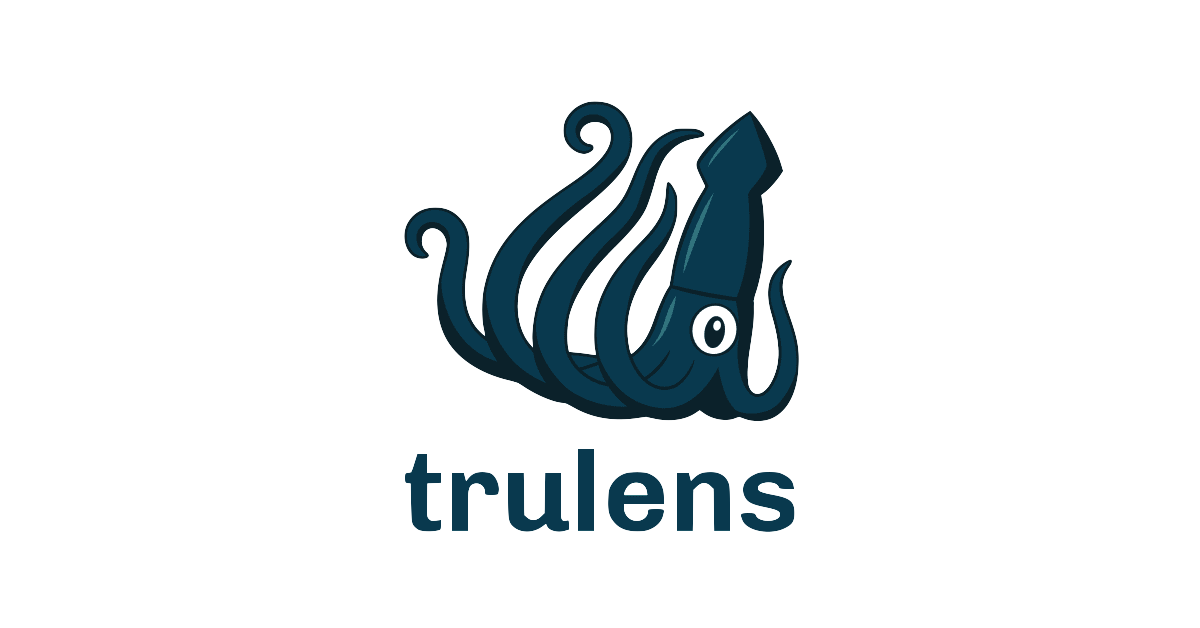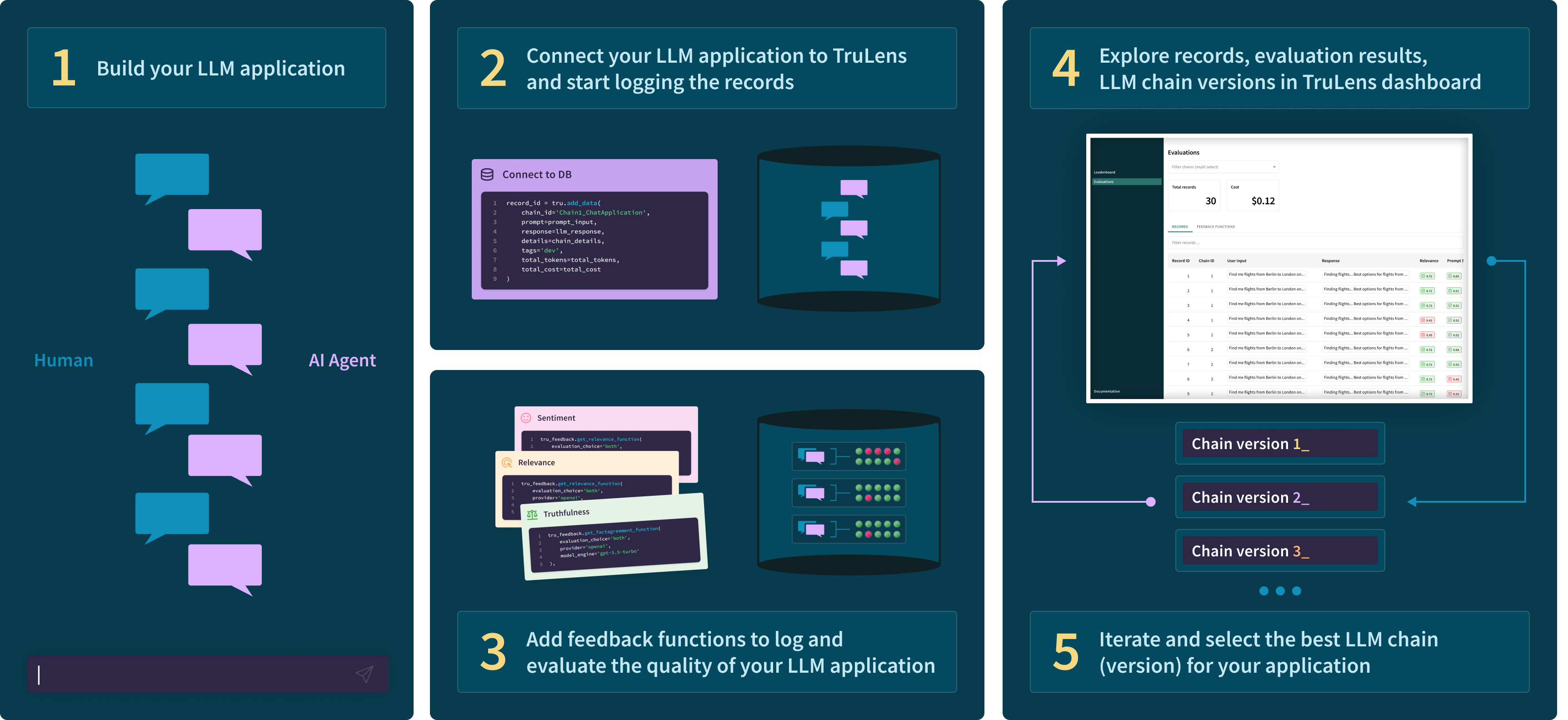Don't just vibe-check your llm app! Systematically evaluate and track your LLM experiments with TruLens. As you develop your app including prompts, models, retrievers, knowledge sources and more, TruLens is the tool you need to understand its performance.
Fine-grained, stack-agnostic instrumentation and comprehensive evaluations help you to identify failure modes & systematically iterate to improve your application.
Read more about the core concepts behind TruLens including Feedback Functions, The RAG Triad, and Honest, Harmless and Helpful Evals.
Build your first prototype then connect instrumentation and logging with TruLens. Decide what feedbacks you need, and specify them with TruLens to run alongside your app. Then iterate and compare versions of your app in an easy-to-use user interface 👇
Install the trulens pip package from PyPI.
pip install trulensWalk through how to instrument and evaluate a RAG built from scratch with TruLens.
Interested in contributing? See our contributing guide for more details.
The best way to support TruLens is to give us a ⭐ on GitHub and join our slack community!






